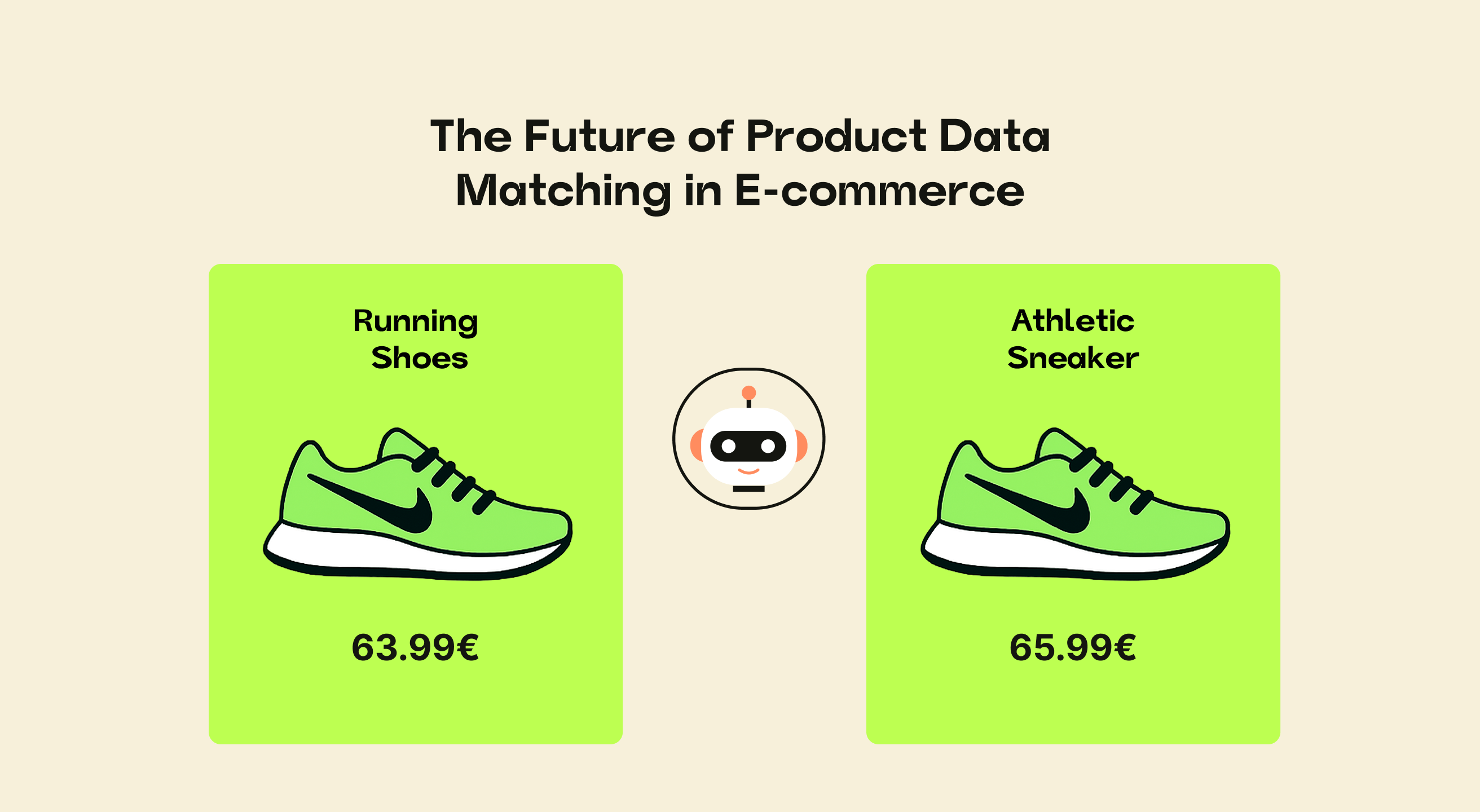Introduction
As e-commerce continues to scale across multiple channels and platforms, businesses are facing a growing challenge: messy, inconsistent, and duplicated product data. Whether you’re selling through your own webstore, marketplaces like Amazon or Kaupmees, or distributing to partners — product data matching is at the core of maintaining a seamless and profitable operation.
Product data matching ensures that the same product is recognized and linked across systems, even when it appears with different names, SKUs, or packaging. Done right, it saves time, improves data quality, and enables advanced use cases like dynamic pricing, product benchmarking, and campaign automation.
This blog explores the importance of product data matching, signs you need to improve it, and how AI is transforming the space.
What is Product Data Matching?
Product data matching is the process of identifying and linking identical or highly similar products across multiple data sources — like supplier catalogs, marketplaces, and internal inventories — even when descriptions, SKUs, or images differ.
Why it matters:
- Ensures a clean and unified product catalog
- Reduces confusion for shoppers seeing duplicate listings
- Supports better inventory, pricing, and analytics decisions
- Essential for dynamic pricing, marketplace aggregation, and e-commerce automation
Without effective matching, retailers and marketplaces risk poor customer experience, mispricing, and lost sales.
5 Signs Your Marketplace Needs Better Product Matching
Poor product data matching can quietly hurt your performance. Here are five red flags to watch for:
Duplicate Listings Appear in Search Results
Customers see the same product multiple times, listed under different sellers.SKU Conflicts Across Channels
The same product has different SKUs across sales channels, creating inventory and fulfillment errors.Inconsistent Product Info
Prices, images, and descriptions vary widely for what should be identical products.High Return Rates
Confusing or inaccurate product listings often lead to wrong purchases and customer frustration.Manual Matching Takes Too Long
Teams spend hours manually cleaning and linking listings, slowing down operations and scaling.
Eliminating Duplicate Listings with Product Matching Tools
Duplicate listings hurt trust, SEO rankings, and conversion rates. Advanced product matching tools fix this by:
- Comparing product titles, descriptions, attributes, and images using AI
- Identifying and merging duplicate SKUs
- Grouping similar products under a single canonical listing
- Keeping only the most relevant offers or pricing from multiple sellers
This helps your marketplace stay clean, searchable, and high-converting.
SKU Matching Challenges in Multi-Channel E-commerce
Managing product data across Amazon, Shopify, Zalando, Kaupmees, and your own ERP?
You’re likely facing:
- Disparate Naming Conventions: One SKU might be called “Blue Sofa XL” on one platform and “XL Azure Couch” on another
- Different Units or Packaging: Products sold as singles vs. bundles
- Missing EANs or GTINs
- Manual Data Entry Errors
These mismatches break analytics, automation, and availability checks. Scalable SKU matching requires automated tools using AI-driven similarity scoring and fuzzy matching techniques.
How AI Improves Product Data Matching
AI revolutionizes product data matching by:
- Text Matching: Comparing titles, descriptions, and tags using NLP
- Image Recognition: Identifying identical or near-identical visuals
- Attribute Scoring: Matching based on weight, color, dimensions, material
- Machine Learning Models: Learning from feedback and improving matching accuracy over time
The result?
- 10× faster matching
- Higher precision (even with messy data)
- Reduced manual effort
- Seamless integration into pricing and analytics systems
Conclusion
In today’s fragmented e-commerce landscape, scalable and accurate product data matching is a competitive necessity. With AI and smart tools, marketplaces and retailers can eliminate duplicates, automate operations, and unlock cleaner data for pricing, personalization, and growth.
Don’t let messy product data slow you down — the future of e-commerce depends on matching things right.

